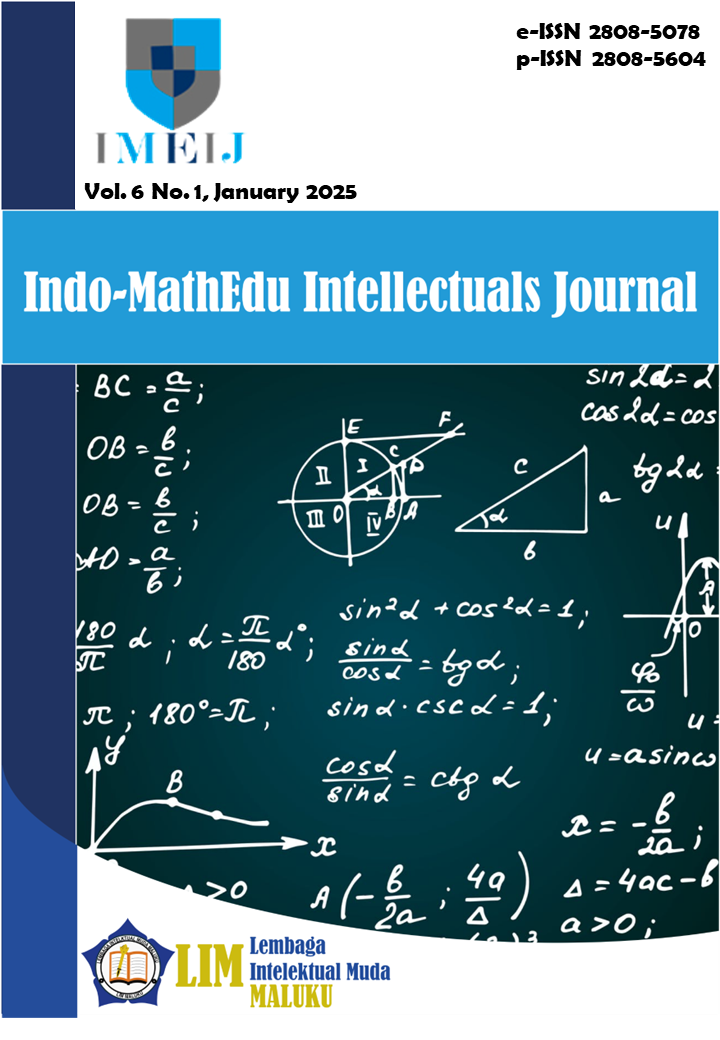Hubungan Antara Gaya Belajar Siswa dengan Cara Menyelesaikan Soal Matematika SMA
Main Article Content
Abstract
This study aims to analyze the relationship between students' learning styles and their ability to solve mathematical problems, particularly on exponent material. The research employs a quantitative approach with a correlational design. The sampling technique used is convenience sampling, involving a sample of 30 tenth-grade students from SMAN 7 Tangerang in the 2024/2025 academic year. The research instruments include a learning style questionnaire based on the VAK model (Visual, Auditory, Kinesthetic) and an exponent mathematics test. Data were analyzed using Pearson correlation to identify the relationship between variables. The analysis results show that the majority of students have a visual learning style (66.7%), followed by auditory (23.3%) and kinesthetic (10%). The Pearson correlation test yielded a significance value of 0.178 > 0.05, indicating no significant relationship between students' learning styles and their methods of solving exponent problems, with a correlation coefficient of 0.253. These findings suggest that variations in students' learning styles are not directly related to their success in solving mathematical problems. Therefore, it is recommended that teaching approaches focus not only on learning styles but also on strengthening conceptual understanding and intensive practice.

